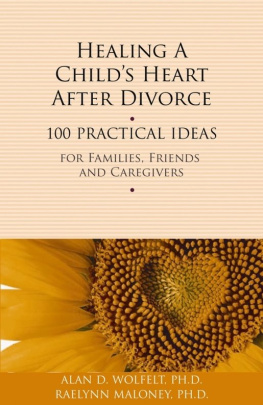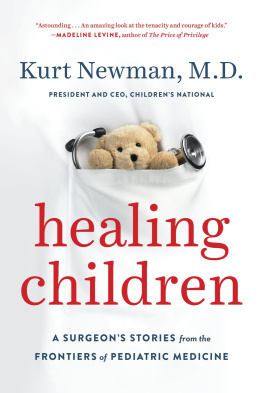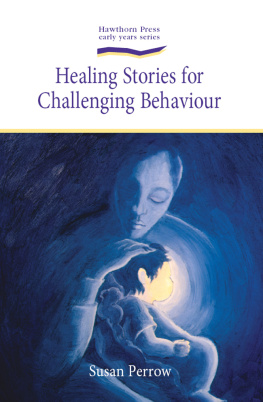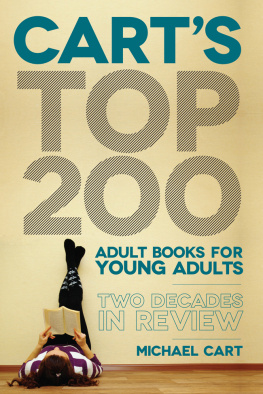HEALING STORIES
HEALING STORIES
Picture Books for the Big & Small
Changes in a Childs Life
JACQUELINE GOLDING, Ph.D.

Copyright 2006 by Jacqueline Golding
First M. Evans edition 2006
This M. Evans paperback edition of Healing Stories is an original publication. It is published by arrangement with the author.
All rights reserved. No part of this book may be reproduced in any form or by any electronic or mechanical means, including information storage and retrieval systems, without written permission from the publisher, except by a reviewer who may quote passages in a review.
Published by M. Evans
An imprint of The Rowman & Littlefield Publishing Group, Inc.
4501 Forbes Boulevard, Suite 200, Lanham, Maryland 20706
Designed and typeset by Evan Johnston
Distributed by NATIONAL BOOK NETWORK
Library of Congress Control Number: 2006927694
ISBN-13: 978-1-59077-097-9 (pbk. : alk. Paper)
 The paper used in this publication meets the minimum requirements of American National Standard for Information SciencesPermanence of Paper for Printed Library Materials, ANSI/NISO Z39.48-1992.
The paper used in this publication meets the minimum requirements of American National Standard for Information SciencesPermanence of Paper for Printed Library Materials, ANSI/NISO Z39.48-1992.
Manufactured in the United States of America.
To Jim, Daniel, and Emily
with love
CONTENTS
ACKNOWLEDGEMENTS
My parents shared their love of reading with me from the very beginning.
Jerome L. Singer, Ph.D., laid the foundation of what I know about childrens imagination, believed in me at an early stage, and always inspired me to do my best work. Dorothy Anderson, Ph.D., was a wonderful role model, and I hope that some of her warmth and practicality come through in this book.
The Berkeley, Contra Costa, Oakland, and Pleasanton public libraries processed hundreds of holds for me and loaned me hundreds more books. Librarians were kind, patient, and friendly, and several shared my excitement about this book.
My agent, Jim Levine, Ed.D., played a vital role in turning this book from a dream into a reality. My editors at M. Evans and Company, PJ Dempsey and especially Matt Harper, listened to my struggles with writing and provided skilled, thoughtful feedback, much-needed humor, and the collaboration and encouragement that sustained the process of writing this book. Evan Johnstons beautiful design work brought substance to my words. Rick Rinehart, Jen Linck, and Stephen Driver at the Rowman & Littlefield Publishing Group guided this book through a major transition and out into the world with competence, care, and grace
Many people generously shared their ideas, favorite picture books, and resources for finding picture books with me, especially Cathy Aiello; Judith Flory, L.C.S.W.; Fran George, M.F.T.; Judi Hampshire, M.F.T.; Shelly Havrilenko; Charmaine Hitchcox, Ph.D.; Lisa Kahan, Ph.D.; Mary Krentz, Ph.D.; Caroline Peterson, D.M.D.; Susan Scatena, Ph.D.; Patti Turetzky; Linden Van Wert; and Grant Wyborny, Ph.D. Judy Goldstein, L.C.S.W. introduced me to End Note with an enthusiasm that was easy to share. Penelope Burrows, M.F.T. and Helen Savin, L.C.S.W. knew just when to ask about this book to inspire its continued progress. Through her friendship and her unshakeable optimism about this book, Lisa Kahan, Ph.D. made a huge difference. The warmth, encouragement, and wisdom of Katherine Fellner, Ph.D.; Judith Flory, L.C.S.W.; and Mary Krentz, Ph.D., have been enormously important in making this book possible.
Jim, Daniel, and Emily supported me in writing this book in unique, essential ways, and bring joy to my life.
INTRODUCTION
Books allow us to open all kinds of doors. Some doors lead to people, giving us the chance to encounter personalities and characters wed otherwise never know. Other doors guide us to places and times beyond our own, broadening our sense of whats possible. Perhaps most important, all of these doors lead us to one place: ourselves. Using diverse yet universal examples, books provide us with fundamental truths about ourselves, illuminating parts of ourselves that we havent developed fully, dont know well, or dont trust yet.
For a long time in my personal and professional life, Ive believed in the power of stories to help kids understand themselves and the world around them, so it was a natural progression that led to incorporating them into my work with children. When I was a post-doctoral fellow at the Contra Costa County Child, Adolescent, and Family Mental Health Service, I shared stories with several young clients. My supervisors liked those stories so much that when my fellowship ended, they asked for a written list of books that they might want to use with clients. That list was a little less than a page long. Since then, Ive updated and expanded it, first when I happened to run across a picture book that struck me as useful, and then with a growing sense of intention and purpose. I began to share the list with colleagues and with parents in my practice, many of whom told me they found it very helpful. This experience led me to write this book so that this resource would be available to you, wherever you are and whatever your connection to children.
If there is an underlying theme to the picture books listed here, its that each of these stories opens doors that lead into a secure sense of a strong self in reliable relationships, a capacity to use imagination to work through difficult situations, and a self that can cope positively and creatively with the challenges children face as they develop. These doors take on many formsfrom the cute to the serious, from the beautiful to the tragicbut each book contained in this list brings kids to a deeper understanding of themselves, helping them to deal with the demands that they face as they grow up, from the everyday to the traumatic.
HOW STORIES HELP
Even under ordinary circumstances, a childs world is filled with changes. As kids grow, their capacities change, and with this development come changes in their expectations of themselves and in adults expectations for them, such as when kids begin to go to sleep on their own, learn to use the potty, and go to school for the first time. Development also brings changes in kids family situations, forcing them to integrate experiences like a new brother or sister or a move to a new house. As children gain the ability to understand situations between people in more complex ways, new questions arise that require more detailed answers about their family, friends, school, and society.
All of these changes require youngsters to expand, adjust, and refine their ways of thinking about different aspects of their lives. Stories can help kids do this by showing new ways of thinking about things. Developmental changes also bring feelings that need to be processed. Children may feel not only proud, happy, and competent, but also sad, angry, worried, lonely, ashamed, or confused. Stories can help them understand and resolve their feelings.
But the healing properties of books arent limited to the everyday transitions of child development. These stories are also vital tools for helping kids understand some of lifes most difficult experiences, such as parents divorce, the serious illness of the child or someone close to them, the death of a person or pet they love, or exposure to natural disaster. Books can effectively aid in the process of healing from these stresses. Regardless of the how big the trauma may be, children will take comfort and learn from characters stories that encourage them to confront their complex emotions. Furthermore, normal processing of trauma includes mental reliving of the experience, with an increasing sense of resolution over the course of many relivings. Stories can provide opportunities for reliving painful or frightening experiences within the safe limits of their covers.
Next page








 The paper used in this publication meets the minimum requirements of American National Standard for Information SciencesPermanence of Paper for Printed Library Materials, ANSI/NISO Z39.48-1992.
The paper used in this publication meets the minimum requirements of American National Standard for Information SciencesPermanence of Paper for Printed Library Materials, ANSI/NISO Z39.48-1992.